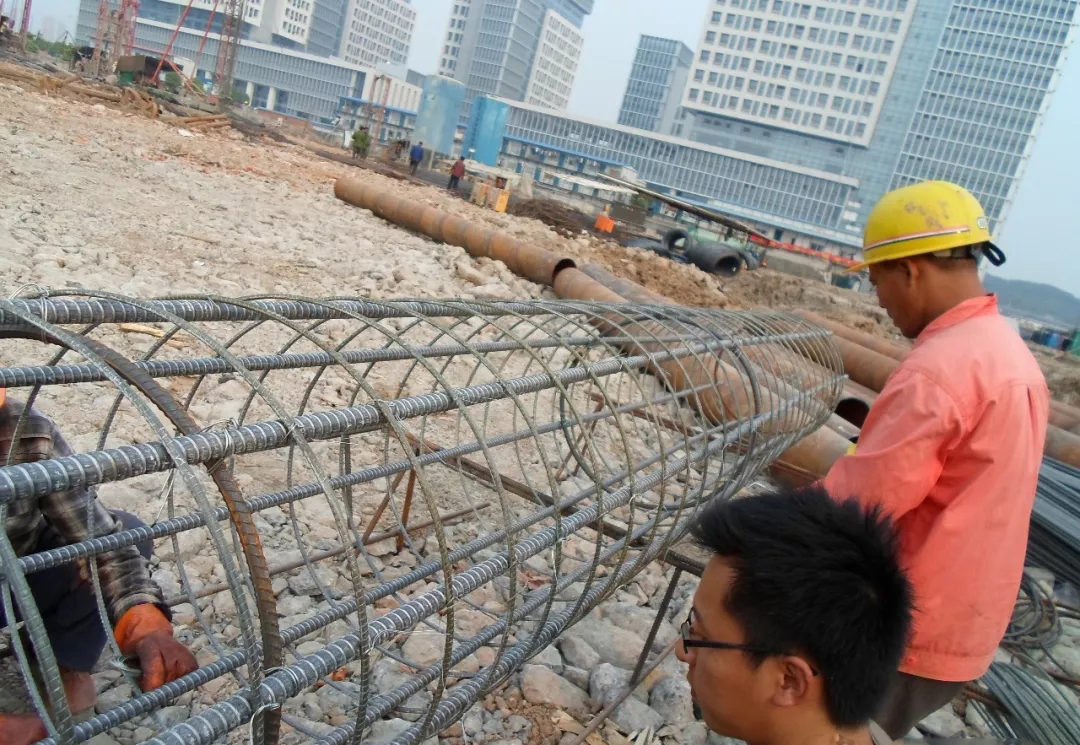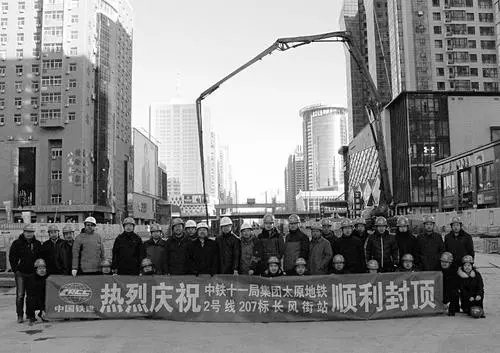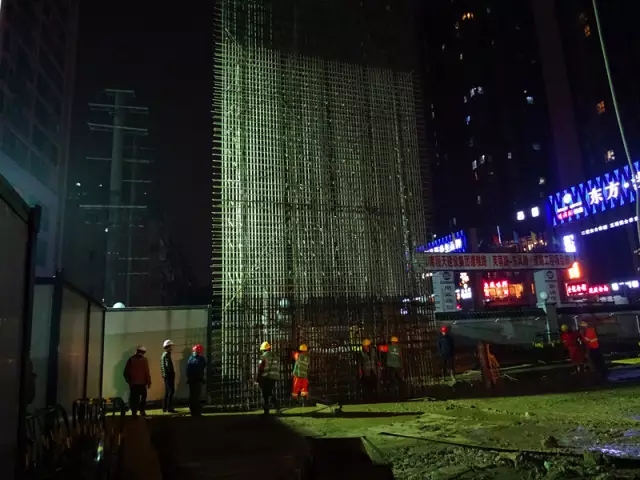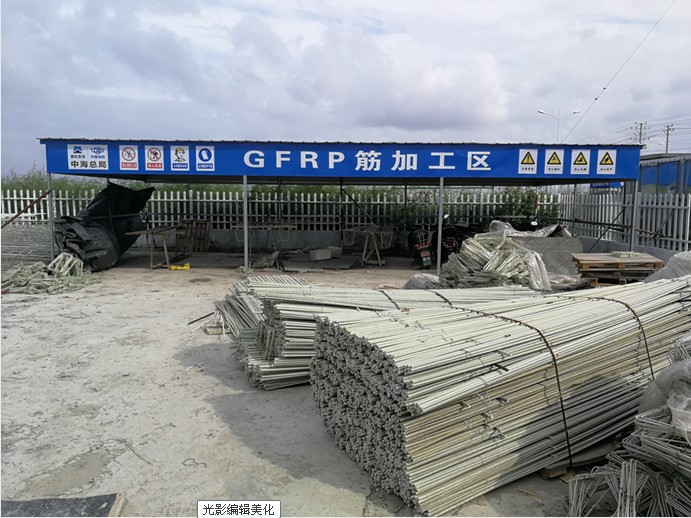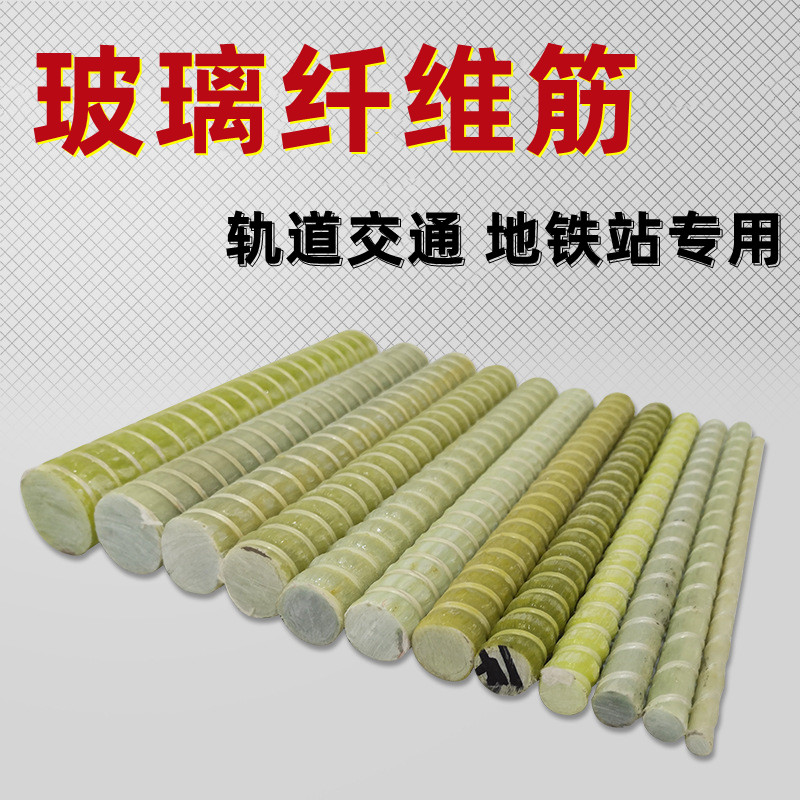联系我们
 玻璃纤维筋,玻璃纤维钢筋,玻璃纤维筋价格,玻璃纤维筋,,GFRP筋生产厂家
玻璃纤维筋,玻璃纤维钢筋,玻璃纤维筋价格,玻璃纤维筋,,GFRP筋生产厂家
免费热线:16651687608
联系电话:16651687608
QQ: 461332297
Email: 461332297@qq.com
地址:江苏省南京市江宁区东山街23号
Glass rebar
文章出处: Glass rebar
人气:
发表时间: 2023/7/7 19:16:50
文章出处: Glass rebar 人气:
发表时间: 2023/7/7 19:16:50
Glass rebar, also known as fiberglass rebar or GFRP (Glass Fiber Reinforced Polymer) rebar, is a type of reinforcement material used in construction. It is made of fiberglass strands embedded in a polymer resin matrix.
Glass rebar offers several advantages over traditional steel rebar. It is lighter in weight, corrosion-resistant, and non-conductive, making it suitable for use in environments with high moisture content or electrical conductivity concerns. It also has a higher tensile strength than steel rebar, allowing for thinner and lighter concrete structures.
Glass rebar is commonly used in applications such as bridge decks, marine structures, and parking garages, where corrosion resistance is critical. It can also be used in applications where electromagnetic neutrality is required, such as in sensitive electronic or medical facilities.
However, glass rebar does have some limitations. It is generally more expensive than steel rebar and may require specialized installation techniques. It also has a lower modulus of elasticity compared to steel, which means it may not be suitable for certain structural applications where stiffness is a critical factor.
Overall, glass rebar offers a viable alternative to steel rebar in certain construction applications, providing improved durability and performance in specific environments.
Glass fiber reinforced with steel, also known as hybrid rebar or composite rebar, is a type of reinforcement material that combines the strength and properties of both glass fiber and steel. It is typically made by combining glass fibers with steel wires or bars during the manufacturing process.
The combination of glass fiber and steel in composite rebar offers several advantages. The glass fiber provides corrosion resistance, lightweight properties, and high tensile strength, while the steel component adds stiffness and enhanced load-bearing capacity. This combination allows for the development of structures that are both durable and strong.
The use of glass fiber reinforced with steel rebar is particularly beneficial in environments with high levels of corrosion, such as coastal areas or chemical processing plants. It can also be used in applications where weight reduction is desired, such as in lightweight concrete structures or in retrofitting existing structures.
However, it is important to note that the use of hybrid rebar may require specialized design and installation techniques. The properties and behavior of composite rebar can differ from traditional steel rebar, so proper engineering considerations are necessary to ensure its effective use.
Overall, glass fiber reinforced with steel rebar offers a combination of properties that can be advantageous in certain construction applications, providing improved corrosion resistance, strength, and weight reduction compared to traditional steel reinforcement.
Glass fiber reinforced with steel rebar can be used in a variety of construction applications. Some common examples include:
Bridge construction: Bridges are often exposed to harsh environmental conditions, such as moisture, saltwater, and temperature fluctuations. Glass fiber reinforced with steel rebar offers excellent resistance to corrosion, making it an ideal choice for reinforcing bridge decks, piers, and other structural elements.
Marine structures: Similar to bridges, marine structures like docks, seawalls, and offshore platforms are constantly exposed to water and saltwater. The corrosion resistance of glass fiber reinforced with steel rebar makes it a suitable option for reinforcing these structures, ensuring their longevity and durability.
Retrofitting existing structures: Glass fiber reinforced with steel rebar can be used to strengthen and retrofit existing structures that are deteriorating or require additional reinforcement. It can help improve the load-bearing capacity and extend the service life of structures such as buildings, parking garages, and industrial facilities.
Concrete reinforcement: Glass fiber reinforced with steel rebar can be used as an alternative to traditional steel rebar in various concrete applications. It provides similar strength and durability while offering the advantages of corrosion resistance and reduced weight. This makes it particularly useful in lightweight concrete structures or in areas where corrosion is a concern.
High-performance applications: Glass fiber reinforced with steel rebar is often used in applications that require high-performance properties, such as in high-rise buildings, stadiums, and infrastructure projects. The combination of glass fiber and steel provides enhanced strength, stiffness, and durability, allowing for the construction of robust and resilient structures.
Overall, glass fiber reinforced with steel rebar offers a versatile and reliable solution for reinforcing concrete structures in various construction applications. Its corrosion resistance, lightweight properties, and high strength make it a valuable alternative to traditional steel reinforcement.
In addition to the mentioned applications, glass fiber reinforced with steel rebar can also be used in other construction projects, including:
Tunnels and underground structures: Glass fiber reinforced with steel rebar is suitable for reinforcing tunnels, underground structures, and subway systems. These structures often face challenges such as high moisture levels and chemical exposure. The corrosion resistance of composite rebar helps maintain the integrity and longevity of these structures.
Airport runways and taxiways: Airports require strong and durable pavements to withstand heavy aircraft loads and repetitive traffic. Glass fiber reinforced with steel rebar can be used in the construction of airport runways, taxiways, and aprons, providing reliable reinforcement and resistance to corrosion caused by de-icing chemicals.
Industrial flooring: In industrial facilities, such as manufacturing plants and warehouses, the flooring must be able to withstand heavy loads, impact, and chemical exposure. Glass fiber reinforced with steel rebar can be used to reinforce industrial flooring, providing the necessary strength and durability for these demanding environments.
Seismic-resistant structures: Glass fiber reinforced with steel rebar can contribute to the seismic resistance of structures in earthquake-prone areas. The combination of high strength and corrosion resistance helps ensure the structural integrity and safety of buildings and infrastructure during seismic events.
Architectural applications: Composite rebar can also be used in architectural applications where aesthetics and functionality are important. It can be used to reinforce elements such as decorative panels, facades, and precast concrete elements, providing both structural reinforcement and design flexibility.
Overall, glass fiber reinforced with steel rebar offers a wide range of applications in the construction industry. Its combination of strength, corrosion resistance, and lightweight properties makes it a versatile and reliable choice for reinforcing various structures, from bridges and marine facilities to buildings and industrial infrastructure.
In addition to the mentioned applications, glass fiber reinforced with steel rebar can also be used in other construction projects, including:
Tunnels and underground structures: Glass fiber reinforced with steel rebar is suitable for reinforcing tunnels, underground structures, and subway systems. These structures often face challenges such as high moisture levels and chemical exposure. The corrosion resistance of composite rebar helps maintain the integrity and longevity of these structures.
Airport runways and taxiways: Airports require strong and durable pavements to withstand heavy aircraft loads and repetitive traffic. Glass fiber reinforced with steel rebar can be used in the construction of airport runways, taxiways, and aprons, providing reliable reinforcement and resistance to corrosion caused by de-icing chemicals.
Industrial flooring: In industrial facilities, such as manufacturing plants and warehouses, the flooring must be able to withstand heavy loads, impact, and chemical exposure. Glass fiber reinforced with steel rebar can be used to reinforce industrial flooring, providing the necessary strength and durability for these demanding environments.
Seismic-resistant structures: Glass fiber reinforced with steel rebar can contribute to the seismic resistance of structures in earthquake-prone areas. The combination of high strength and corrosion resistance helps ensure the structural integrity and safety of buildings and infrastructure during seismic events.
Architectural applications: Composite rebar can also be used in architectural applications where aesthetics and functionality are important. It can be used to reinforce elements such as decorative panels, facades, and precast concrete elements, providing both structural reinforcement and design flexibility.
Overall, glass fiber reinforced with steel rebar offers a wide range of applications in the construction industry. Its combination of strength, corrosion resistance, and lightweight properties makes it a versatile and reliable choice for reinforcing various structures, from bridges and marine facilities to buildings and industrial infrastructure.
In terms of cost, glass fiber reinforced with steel rebar may have a higher upfront cost compared to traditional steel rebar. However, it is important to consider the long-term benefits and cost savings that can be achieved with composite rebar. Some of the potential cost advantages include:
Reduced maintenance and repair costs: Glass fiber reinforced with steel rebar's corrosion resistance properties can significantly reduce maintenance and repair costs over the lifespan of a structure. Traditional steel rebar is susceptible to corrosion, which can lead to costly repairs and replacements. Composite rebar eliminates the need for ongoing maintenance and repairs due to corrosion, resulting in long-term cost savings.
Extended service life: Structures reinforced with glass fiber reinforced with steel rebar can have an extended service life compared to those reinforced with traditional steel rebar. The corrosion resistance and durability of composite rebar can help prevent premature deterioration, reducing the need for costly replacements or major repairs in the future.
Lightweight and ease of handling: Glass fiber reinforced with steel rebar is lighter than traditional steel rebar, making it easier to handle and transport. This can result in cost savings in terms of labor, equipment, and logistics during the construction process.
Reduced construction time: The lightweight nature of composite rebar can also contribute to faster construction times. It can be easier and quicker to install, leading to potential cost savings in terms of labor and construction scheduling.
Design flexibility: Composite rebar offers design flexibility, allowing for the creation of complex and innovative structures. This can result in cost savings by optimizing material usage, reducing waste, and potentially reducing the overall quantity of reinforcement required.
While the upfront cost of glass fiber reinforced with steel rebar may be higher, the long-term cost savings and benefits it offers make it a cost-effective choice for many construction projects. It is important to consider the specific requirements and factors of each project to determine the most suitable and economical reinforcement solution.
Additionally, it is worth noting that the cost of glass fiber reinforced with steel rebar can vary depending on factors such as the specific manufacturer, project requirements, and market conditions. It is recommended to obtain quotes from multiple suppliers and compare the costs and benefits of different options before making a decision.
Furthermore, it is important to consider the overall lifecycle cost of a structure when evaluating the cost-effectiveness of glass fiber reinforced with steel rebar. While the initial investment may be higher, the long-term durability and reduced maintenance costs can result in significant savings over the lifespan of the structure.
It is also worth mentioning that the use of glass fiber reinforced with steel rebar may qualify for certain incentives or certifications related to sustainability and green building practices. These incentives can further offset the cost and enhance the overall value of using composite rebar in construction projects.
Ultimately, the cost-effectiveness of glass fiber reinforced with steel rebar will depend on the specific project requirements, budget constraints, and long-term goals. It is recommended to consult with experienced professionals and conduct a thorough cost-benefit analysis to determine the most appropriate and cost-effective reinforcement solution for each project.
In terms of installation, the process of installing glass fiber reinforced with steel rebar is similar to that of traditional steel rebar. Here are some key steps involved in the installation process:
Planning and design: Before installation, it is important to have a well-thought-out plan and design for the reinforcement of the structure. This includes determining the placement, spacing, and size of the composite rebar, as well as considering any specific design requirements or constraints.
Cutting and shaping: Glass fiber reinforced with steel rebar can be cut and shaped using specialized tools designed for composite materials. It is important to follow the manufacturer's guidelines and recommendations for cutting and shaping the rebar to ensure proper fit and alignment.
Placement and positioning: The composite rebar is then placed and positioned in the desired locations within the concrete structure. This typically involves securing the rebar in the correct position using supports, chairs, or other appropriate methods to maintain the required spacing and alignment.
Tying and connecting: Once the composite rebar is in place, it is important to securely tie and connect the bars together at intersections and overlaps. This can be done using tie wire, clamps, or other suitable methods to ensure proper connection and structural integrity.
Concrete pouring: After the composite rebar is properly installed, the concrete can be poured and placed around the reinforcement. It is important to ensure that the concrete is properly compacted and consolidated to ensure good bonding with the composite rebar.
Curing and finishing: Once the concrete is poured, it needs to be properly cured and finished according to standard concrete practices. This includes protecting the concrete from excessive moisture loss, temperature fluctuations, and other factors that can affect the curing process.
Throughout the installation process, it is important to follow industry guidelines, manufacturer's instructions, and any specific project requirements to ensure the proper installation of glass fiber reinforced with steel rebar. Regular inspections and quality control measures should also be implemented to ensure that the installation meets the required standards and specifications.
Quality control and inspections: It is essential to conduct regular quality control checks and inspections during the installation process. This helps ensure that the composite rebar is installed correctly, meets the required specifications, and is in compliance with industry standards. Inspections may involve checking the alignment, spacing, and connection of the rebar, as well as verifying that it is properly embedded in the concrete.
Monitoring and maintenance: After the installation is complete, it is important to monitor the performance of the glass fiber reinforced with steel rebar over time. This includes regularly inspecting the structure for any signs of damage, such as cracking or delamination, and addressing any maintenance or repair needs promptly. Proper maintenance, such as regular cleaning and inspection, can help prolong the lifespan and effectiveness of the composite rebar.
Training and expertise: It is crucial to have trained and experienced personnel involved in the installation process. This includes workers who are knowledgeable about the properties and handling of glass fiber reinforced with steel rebar, as well as those who are skilled in concrete placement and finishing techniques. Proper training and expertise contribute to the successful installation and performance of the composite rebar.
Compliance with regulations and codes: During the installation process, it is essential to adhere to relevant building codes, regulations, and industry standards. This ensures that the installation meets the required safety and structural requirements. Compliance with regulations and codes helps ensure the long-term durability and performance of the structure.
By following these steps and best practices, the installation of glass fiber reinforced with steel rebar can be carried out effectively and efficiently. It is important to consult with professionals and experts in the field to ensure that the installation process is conducted correctly and in accordance with industry standards.
Documentation and record-keeping: It is important to maintain proper documentation and records throughout the installation process. This includes keeping track of the materials used, installation procedures followed, inspections conducted, and any modifications or repairs made. Documentation helps ensure accountability, traceability, and provides a reference for future maintenance or repair needs.
Collaboration and communication: Effective communication and collaboration among all stakeholders involved in the installation process are crucial. This includes architects, engineers, contractors, and suppliers. Regular communication helps ensure that everyone is on the same page regarding project requirements, timelines, and any changes or issues that may arise during the installation process.
Project management: Proper project management is essential for the successful installation of glass fiber reinforced with steel rebar. This includes coordinating and scheduling tasks, managing resources, and ensuring that the installation is carried out according to the project plan and timeline. Project management helps streamline the installation process, minimize delays, and ensure that all necessary steps are taken to achieve a quality installation.
Training and education: It is beneficial to provide training and education on the use and installation of glass fiber reinforced with steel rebar to all relevant personnel involved in the project. This helps ensure that everyone understands the unique properties and handling requirements of the composite rebar, as well as the specific installation techniques and best practices. Training and education contribute to a safer and more efficient installation process.
Continuous improvement: It is important to continuously evaluate and improve the installation process for glass fiber reinforced with steel rebar. This can be done by seeking feedback from stakeholders, conducting post-installation inspections and assessments, and implementing any necessary changes or improvements. Continuous improvement helps enhance the quality and efficiency of future installations and contributes to the overall success of the project.
By following these additional steps, the installation of glass fiber reinforced with steel rebar can be carried out in a systematic and efficient manner. Proper planning, communication, documentation, and continuous improvement contribute to a successful installation process and ensure the long-term performance and durability of the structure.

